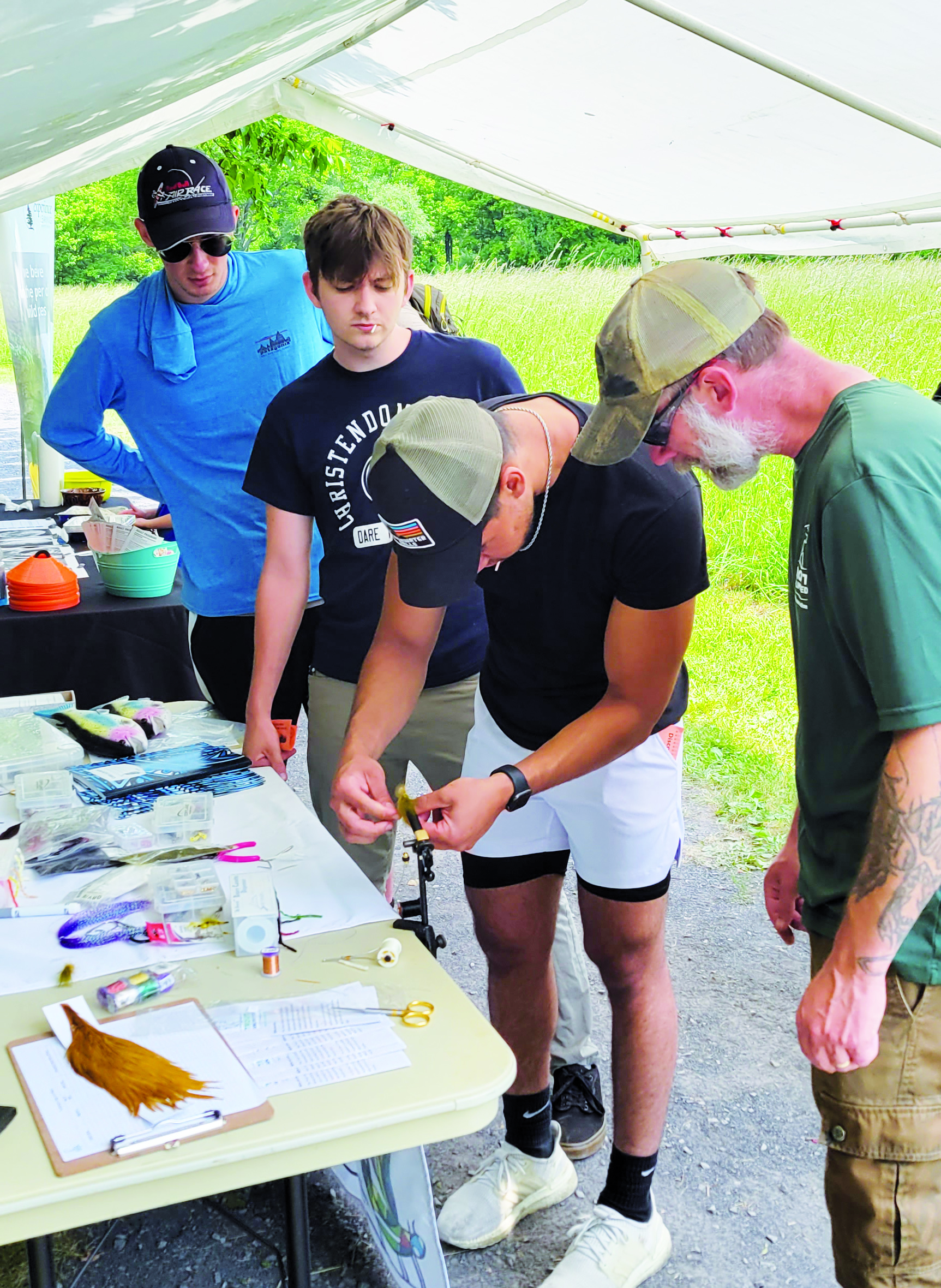
By Stephen Smoot
“We pack in a whole lot of nature in a short amount of time.” So says Alison Bailey, the former assistant director of Seneca Rocks Discovery Center, who now works as a support service specialist for the United States Forest Service. She described the “Discover Nature” event that entertained and educated countless children, parents, and even their canine friends.
Bailey explained the impact of “Discover Nature” on kids. “It literally gets them closer to nature,” she stated, then added that “it’s one thing to hear about snakes, but to see them up close in a controlled and safe environment, you get an appreciation.”
Smokey the Bear was on hand to help greet attendees to the event that featured numerous education booths operated by the US Forest Service, various State of West Virginia agencies, and several non profits. His message of fire safety resonated loud and clear in a facility that lay close to one of April’s wildfire sites.
Forest service staff manned a number of tables. Children were invited to make ornaments for the U.S. Capitol Christmas Tree, scheduled for a visitation to Upper Tract in November. Children got an opportunity to learn more about trees while using markers, crayons, pens, glue, and other art supplies to create their treasures.
Another table invited children of all ages to examine a fish tank and make wishes. Forest service staff and an AmeriCorps volunteer stood by to answer any questions and explain the connections between healthy fish and clear streams. The fish came from the nearby North Fork. Children could guess what type of fish or the total number.
The West Virginia Departments of Natural Resources and also Environmental Protection brought a number of opportunities to teach about how water shapes the environment, and how human activity can shape stream health.
For the most part, exhibitors used dynamic dioramas with moving parts and interactive features to hold the attention of children at their stations. The West Virginia Youth Environmental Program demonstrated first how pollution gets into streams, then the Chesapeake Bay and ocean. The demonstrator placed droplets of oil, glitter, and other objects that represent normal pollution on a representation of forests, rivers, towns, and the ocean.
The first attempt showed how stormwater can sweep pollutants into the ocean. Sponges were placed in strategic areas to represent rain gardens and other stormwater barriers. Children could then see the difference that even a small level of added infrastructure could make. The DNR exhibit demonstrated the power of water to carve out hollows and valleys while crafting the landforms found in the state.
Those who stopped at this booth also learned how improperly placed culverts can catch debris and cause flooding, while also preventing the downstream migration of game and other fish.
The fire and law enforcement team from the forest service includes the “Bark Ranger” program. Seneca Rocks Discovery Center always allows dogs to come into the facility, but this program teaches dog owners how to be respectful of the trail, wildlife, and other patrons. Those who experience it can get a free collar or bandana.
They also discussed fire safety and prevention in the wilderness while demonstrating equipment.
At the edge of the field behind the Discovery Center, tables were manned by Future Generations University and Trout Unlimited. Representatives from FGU, who partnered with the Mission to Mars program, brought information on the moon’s various landforms and how they were created. Their point in bringing the moon to Seneca Rocks lay in the idea that kids in elementary school today will likely have the opportunity to travel to the moon for work or pleasure in their lifetimes.
Trout Unlimited shared with attendees details about the May Fly Project. This program establishes a mentorship program where children get hooked on fly fishing. Mentors work with the kids to teach them fishing, share values, and model the right conduct when in the wilderness.
Becca Myers described her excitement at the impact of the project, saying “one of my favorite parts of my job is working with Pendleton County kids.” She said that many have limited opportunities to get away from home and have adventures in the area.
The event helped considerably to bring visitors from outside Pendleton County to enjoy the fun. Jerry Utterback brought his family, including six children, from Wardensville. He said of the event, “it keeps them busy, lets them learn about nature, keeps them out of the city.” Utterback shared that “if you give them something to do here, they won’t go there.”
Meanwhile, one could hear the delighted shouts of children in the auditorium watching a live bird demonstration, featuring owls and other fine feathered friends.
Those who missed out in 2023 need not worry, however.
“This is an annual event,” Bailey said, “We’ll see you again next year!”



